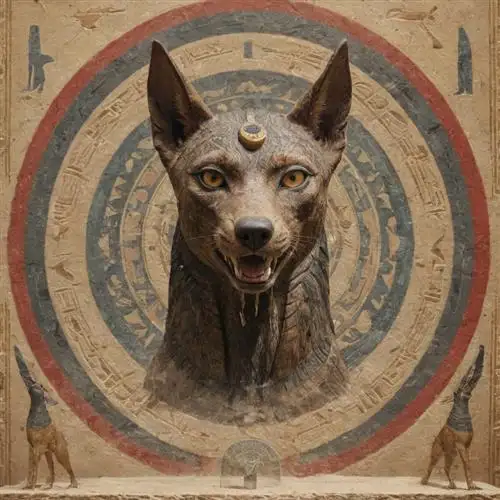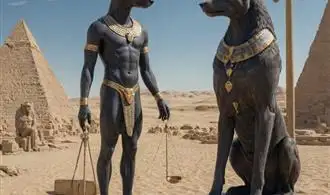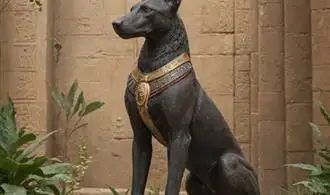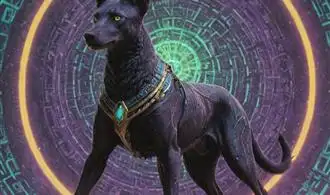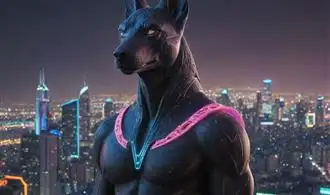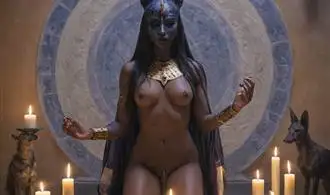
Debunking the Misconceptions About Anubis Imagery
One of the most pervasive misconceptions about Anubis imagery is the belief that the jackal-headed figure is a representation of death. While Anubis was indeed associated with the afterlife and the process of mummification in ancient Egyptian mythology, his role was far more complex and nuanced than a simple personification of death. Anubis was a psychopomp, a deity who guided the souls of the deceased through the underworld and ensured the proper preservation of the body for the afterlife.
Another common misconception is that Anubis was the sole deity responsible for the mummification process. In reality, Anubis worked in conjunction with other deities, such as Isis and Nephthys, to ensure the successful transition of the deceased into the afterlife. Anubis was primarily responsible for the embalming and wrapping of the body, but the entire process was a collaborative effort among various divine entities.
The portrayal of Anubis with the head of a jackal or wild dog has also been the subject of much debate and speculation. Some scholars have suggested that this imagery was a deliberate attempt to associate Anubis with the natural world and the cycle of life and death, as jackals and wild dogs were often observed scavenging in the desert near burial sites. However, it is important to note that the ancient Egyptians did not view these animals as inherently evil or malevolent, but rather as integral components of the natural order.
Furthermore, the belief that Anubis was a god of the underworld is not entirely accurate. While Anubis was associated with the underworld and the process of mummification, he was not the ruler or king of the underworld. That distinction belonged to Osiris, the god of the dead and the afterlife. Anubis was more of a guardian and facilitator, ensuring the safe passage of the deceased into the next life.
Symbology and Significance of Anubis Iconography
The symbology and significance of Anubis iconography are deeply rooted in ancient Egyptian mythology and beliefs. Anubis, often depicted as a jackal-headed deity, held a crucial role in the afterlife rituals and the journey of the deceased through the underworld.
One of the primary symbolic associations of Anubis is with mummification and the preservation of the dead. As the god of embalming, Anubis was responsible for overseeing the complex process of mummification, ensuring the proper preparation of the deceased for their afterlife journey. This association is evident in the numerous depictions of Anubis standing guard over the mummified body or performing the embalming rituals.
The jackal-headed form of Anubis is believed to hold deep significance. Jackals were often seen near cemeteries and burial sites, feeding on the remains of the dead. This connection to the underworld and the realm of the dead led to Anubis being revered as a guardian of the necropolis and the protector of the deceased.
Anubis also played a crucial role in the judgment of the dead. In the famous weighing of the heart ceremony, Anubis would oversee the process of weighing the deceased's heart against the feather of Ma'at, the goddess of truth and justice. This symbolized the deceased's moral and ethical conduct during their lifetime, determining their eligibility for the afterlife.
- The jackal-headed figure, sometimes depicted with a human body
- The distinctive black color, which was associated with the embalming process and the fertile soil of the Nile River
- The crook and flail, symbols of kingship and authority, often held by Anubis
- The canopic jar, used to store the internal organs of the deceased during mummification
Variations and Interpretations of Anubis Depictions
Anubis, the jackal-headed Egyptian god associated with the afterlife, has been a subject of fascination and intrigue for centuries. The visual depictions of this enigmatic deity have been widely explored, leading to a wealth of interpretations and controversies surrounding their significance. In this article, we delve into the various interpretations and variations of Anubis imagery, shedding light on the nuances and symbolism that have captivated scholars and enthusiasts alike.
One of the most notable variations in Anubis imagery is the deity's animal representation. While the jackal-headed form is the most widely recognized, Anubis has also been depicted with the head of a different canine species, such as the wild dog or the African wild dog. These variations in animal form are believed to reflect regional or cultural differences in the perception and worship of Anubis across ancient Egypt.
Furthermore, the positioning and posture of Anubis in visual representations hold significant meaning. In some depictions, the god is shown in a standing position, often with one arm raised, while in others, he is seated on a throne or kneeling. These postures are thought to convey specific aspects of Anubis's role and responsibilities, such as his function as a guide for the dead or his role in the judgment of the deceased.
The coloration and ornamentation of Anubis imagery also hold symbolic value. The god is often depicted in shades of black, which can be interpreted as a reference to the color of the fertile Nile soil or the dark, mysterious realm of the underworld that he presides over. Additionally, Anubis may be adorned with various symbols, such as the ankh (the hieroglyphic symbol for life), the was scepter (a symbol of power and dominion), or the atef crown (a distinctive headdress associated with the god).
Interestingly, Anubis has also been depicted in a more anthropomorphic form, with a human body and the head of a jackal. This variation is believed to represent the god's role as a mediator between the living and the dead, as well as his ability to traverse the boundaries between the physical and spiritual realms.
Another intriguing aspect of Anubis imagery is the presence of other deities or figures in association with the jackal-headed god. In some representations, Anubis is shown alongside the goddess Isis or the cat-headed deity Bastet, highlighting the interconnectedness of the Egyptian pantheon and the complex web of religious beliefs and practices.
Cultural and Historical Influences on Anubis Imagery
The imagery and symbolism of Anubis, the ancient Egyptian god associated with death, the afterlife, and mummification, have long been the subject of fascination and debate. However, the cultural and historical influences that have shaped the depiction of this iconic deity are often overlooked. By delving into the rich tapestry of ancient Egyptian beliefs and practices, we can uncover the fascinating stories that have contributed to the enduring mystique of Anubis.
One of the key drivers of Anubis' prominence in ancient Egyptian art and mythology was the central role of the afterlife in their spiritual beliefs. The Egyptians placed great importance on the process of mummification, which was seen as essential for the preservation of the soul and the journey to the afterlife. Anubis, with his jackal-headed form, was believed to oversee this crucial process, guiding the deceased through the complex rituals and ensuring their safe passage to the next world.
The choice of the jackal as Anubis' animal form was not arbitrary; it was deeply rooted in the cultural and environmental context of ancient Egypt. Jackals were often observed near burial sites, scavenging on the dead, and this association with death and the underworld led to their selection as the symbolic representation of Anubis. The jackal's keen senses and ability to navigate the darkness were also seen as fitting attributes for a deity tasked with guiding souls through the unknown realm of the afterlife.
Moreover, the iconic status of Anubis was further reinforced by his integration into the broader pantheon of Egyptian deities. As the son of Ra, the sun god, Anubis was closely linked to the cycle of life, death, and rebirth – a fundamental concept in ancient Egyptian mythology. This connection to the sun god and the celestial realm imbued Anubis with a sense of cosmic significance, elevating his role as a guardian of the afterlife.
The "FOMO? Anubis Holds the Key to the Afterlife" explores the idea that the fear of missing out (FOMO) was a driving force behind the Egyptians' preoccupation with the afterlife, and how Anubis became a central figure in their efforts to ensure a safe and prosperous journey to the next world.
Controversies and Debates Surrounding Anubis Iconography
Anubis, the jackal-headed Egyptian deity, has long been the subject of fascination and controversy. The iconography associated with this enigmatic figure has been the focus of numerous debates and mythological interpretations. In this article, we will delve into the complexities and controversies surrounding the imagery of Anubis, shedding light on the various perspectives that have emerged over time.
One of the primary controversies surrounding Anubis imagery is the interpretation of the deity's role and significance within the Egyptian pantheon. While Anubis is often associated with the process of mummification and the afterlife, some scholars argue that this interpretation may be oversimplified or even inaccurate. They contend that Anubis's role was much more multifaceted, encompassing various aspects of Egyptian mythology and cosmology.
Another point of contention is the symbolism behind the jackal-headed form of Anubis. Some researchers suggest that the jackal, or the wild dog, was not the original animal representation of the deity. Instead, they propose that the jackal form may have been a later development, potentially influenced by the consolidation of regional cults or the desire to distinguish Anubis from other deities with similar animal associations.
The debate around the origins and evolution of Anubis iconography is further complicated by the fact that the deity's visual representation has undergone numerous transformations over time. While the jackal-headed figure is the most commonly recognized depiction, Anubis has also been portrayed in various other forms, including a fully human appearance or a hybrid creature with both human and animal features.
Moreover, the placement and positioning of Anubis within Egyptian art and funerary contexts have been the subject of intense scrutiny. Scholars have analyzed the placement of Anubis statues or images in relation to other deities, the deceased, and the broader funerary landscape, attempting to unravel the symbolic significance of these arrangements.
Controversies also arise regarding the evolution of Anubis's iconography and its potential links to other ancient Near Eastern deities or mythological traditions. Some researchers have drawn connections between Anubis and similar jackal-headed figures found in the art and beliefs of neighboring civilizations, such as Mesopotamia or the Levant. These comparisons have sparked debates about cultural diffusion, shared symbolism, and the complex web of cultural influences that shaped the development of Egyptian mythology.
In recent years, the study of Anubis iconography has also been influenced by advancements in archaeological research, scientific analysis, and the application of new interpretive frameworks. These developments have led to a reevaluation of existing theories and the emergence of novel perspectives that challenge traditional understandings of Anubis's role and significance.


